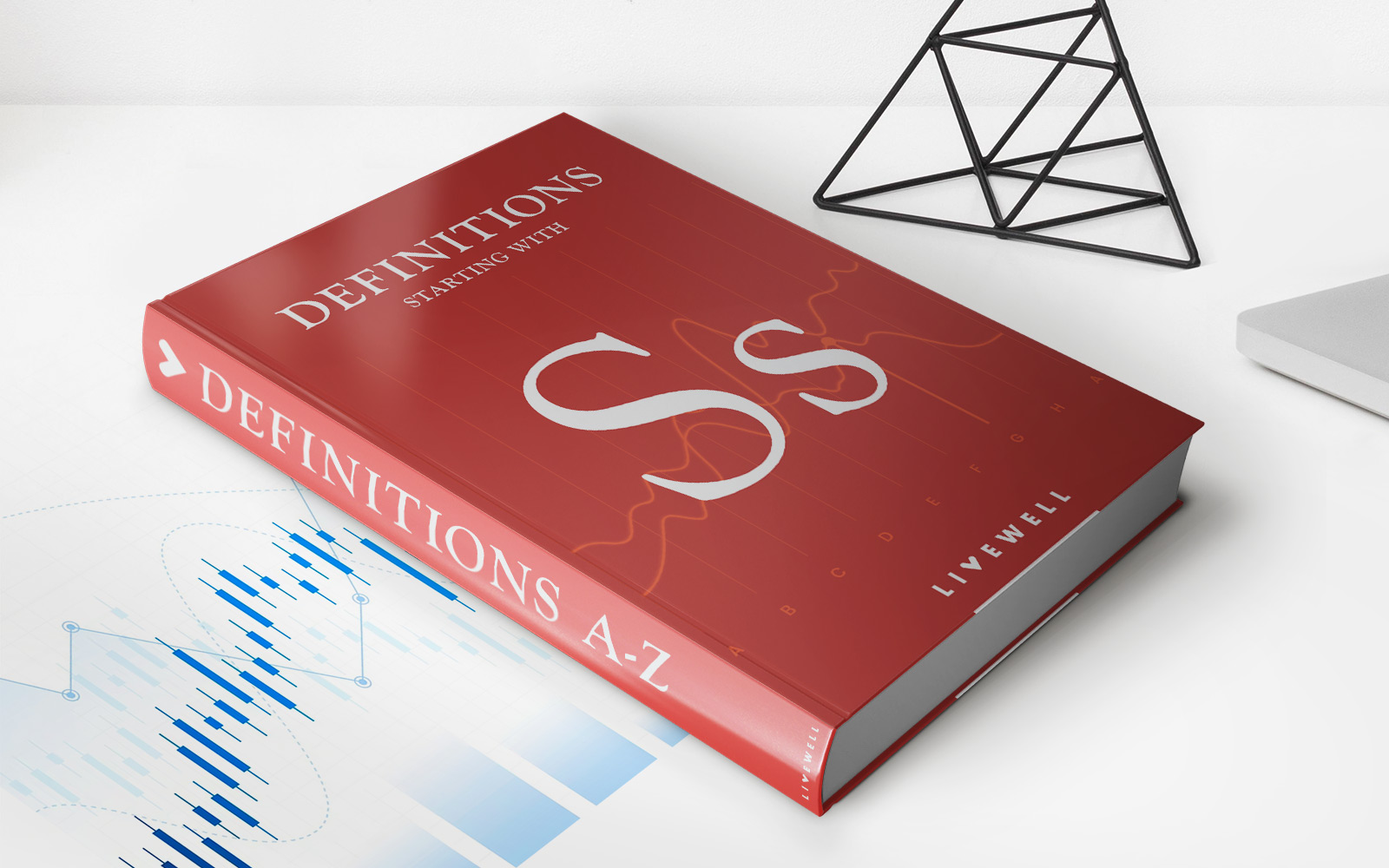

Finance
How Long Is The Grace Period For Plus Loans?
Modified: February 21, 2024
Learn about the grace period for Plus loans and how it impacts your finances. Find out the details you need to manage your loan effectively.
(Many of the links in this article redirect to a specific reviewed product. Your purchase of these products through affiliate links helps to generate commission for LiveWell, at no extra cost. Learn more)
Table of Contents
Introduction
Welcome to the comprehensive guide on Plus loans and their grace period. If you're considering or have already taken out a Plus loan, understanding the grace period is crucial for effective financial planning. Plus loans are a popular choice for parents and graduate or professional students looking to cover education costs beyond what other financial aid offers. These loans offer various benefits, including flexible repayment options and the potential to cover the entire cost of attendance.
One essential aspect of Plus loans is the grace period, which provides a valuable window of time before repayment begins. During this period, borrowers have the opportunity to prepare for their repayment obligations and make informed decisions about their financial strategy. Understanding the length of the grace period and the available options during this time can significantly impact your financial well-being.
In this guide, we will delve into Plus loans, explore the specifics of the grace period, and provide insights into the options available during this critical phase. Whether you're a parent considering a Plus loan for your child's education or a graduate student exploring financial aid options, this guide will equip you with the knowledge needed to navigate the Plus loan grace period effectively. Let's embark on this informative journey to gain a comprehensive understanding of the grace period for Plus loans.
Understanding Plus Loans
Plus loans, also known as Parent Plus loans and Grad Plus loans, are federal loans that provide a financial resource for parents of dependent undergraduate students and graduate or professional students. These loans are designed to cover education expenses that may not be fully addressed by other financial aid options, such as grants, scholarships, and federal student loans.
One of the key benefits of Plus loans is the absence of a strict borrowing cap, allowing borrowers to potentially cover the entire cost of attendance. This flexibility makes Plus loans an attractive option for families and students seeking additional financial support for higher education.
It’s important to note that Plus loans require a credit check, and the borrower must not have an adverse credit history. However, the credit requirements for Plus loans are generally less stringent compared to private student loans, making them accessible to a wider range of borrowers.
Another notable aspect of Plus loans is their fixed interest rates, which provide stability and predictability for borrowers. Additionally, Plus loans offer various repayment plans, including income-driven options, to accommodate diverse financial circumstances.
Overall, Plus loans serve as a valuable tool for financing education, offering features that cater to the specific needs of parents and graduate or professional students. Understanding the intricacies of Plus loans is essential for making informed decisions about higher education financing, and the grace period associated with these loans plays a pivotal role in the overall borrowing experience.
Grace Period for Plus Loans
The grace period for Plus loans represents a crucial interval between the completion of a student’s education and the commencement of loan repayment. This period offers borrowers a valuable opportunity to prepare for the financial responsibilities associated with their Plus loans. During the grace period, borrowers are not required to make loan payments, providing a buffer that allows for financial planning and transition into the repayment phase.
It’s important to note that the grace period for Plus loans is distinct from the grace period for Direct Subsidized and Unsubsidized loans. While the latter typically provides a six-month grace period after a student graduates, leaves school, or drops below half-time enrollment, Plus loans operate under a different set of guidelines.
Understanding the specifics of the grace period for Plus loans is essential for borrowers to effectively manage their financial obligations. By gaining insights into the duration of this period and the available options, borrowers can make informed decisions that align with their financial circumstances and goals.
As we delve deeper into the details of the grace period, we will explore the length of this critical timeframe and the options available to borrowers during this phase. By understanding the nuances of the Plus loan grace period, borrowers can navigate the post-education transition with confidence and financial acumen.
Length of the Grace Period
The length of the grace period for Plus loans differs from the grace period associated with Direct Subsidized and Unsubsidized loans. While the latter typically offers a six-month grace period after a student graduates, leaves school, or drops below half-time enrollment, Plus loans operate under a distinct set of guidelines.
For Plus loans, the grace period begins once the student for whom the loan was borrowed graduates, leaves school, or drops below half-time enrollment. However, unlike the six-month grace period for Direct Subsidized and Unsubsidized loans, Plus loans do not have a standard grace period duration. The specifics of the grace period for Plus loans can vary, and it is essential for borrowers to consult with their loan servicer to determine the exact length of their grace period.
It’s important for borrowers to proactively engage with their loan servicer to gain clarity on the duration of their grace period and understand the implications for their financial planning. By obtaining accurate information about the length of the grace period, borrowers can effectively prepare for the transition into the repayment phase and make well-informed decisions regarding their financial strategy.
As the grace period for Plus loans does not adhere to a uniform timeframe, borrowers should prioritize communication with their loan servicer to ensure a comprehensive understanding of their specific grace period duration. This proactive approach empowers borrowers to navigate the post-education phase with confidence and clarity, laying a strong foundation for successful loan repayment.
Options During the Grace Period
During the grace period for Plus loans, borrowers have several options to consider as they prepare for the upcoming repayment phase. Understanding and leveraging these options can contribute to effective financial planning and a smooth transition into loan repayment.
Financial Planning: The grace period provides borrowers with an opportunity to assess their financial situation and create a comprehensive repayment strategy. This includes evaluating income sources, budgeting for loan payments, and exploring potential repayment plans that align with their financial capabilities.
Loan Consolidation: Borrowers may choose to consolidate their Plus loans during the grace period. Loan consolidation allows for the merging of multiple federal education loans into a single loan, simplifying the repayment process and potentially extending the repayment term, which can result in reduced monthly payments.
Exploring Repayment Plans: During the grace period, borrowers can research and compare various repayment plans offered for Plus loans. Understanding the nuances of each plan, including income-driven options and fixed-term plans, enables borrowers to select a repayment strategy that best suits their financial circumstances.
Financial Counseling: Utilizing the grace period to seek financial counseling or guidance can provide valuable insights into managing Plus loan repayment. Counselors can offer tailored advice, address specific financial concerns, and assist borrowers in developing a customized repayment approach.
Employment and Income Evaluation: For graduate or professional students entering the workforce, the grace period presents an opportunity to assess potential employment opportunities and evaluate income projections. This assessment can inform decisions regarding loan repayment and the selection of an appropriate repayment plan.
By actively exploring these options and leveraging the grace period effectively, borrowers can lay a solid foundation for successful Plus loan repayment. Engaging in proactive financial planning and leveraging available resources during the grace period can contribute to a smooth transition into the repayment phase, setting the stage for responsible and manageable loan repayment.
Conclusion
Understanding the grace period for Plus loans is essential for borrowers seeking to navigate the post-education phase with financial acumen and confidence. This critical interval offers a valuable opportunity for borrowers to prepare for the upcoming loan repayment obligations and make informed decisions regarding their financial strategy.
While the length of the grace period for Plus loans may vary and does not adhere to a standard duration, borrowers can proactively engage with their loan servicer to gain clarity on the specifics of their grace period. This proactive approach empowers borrowers to effectively plan for loan repayment and explore available options during the grace period.
Options such as financial planning, loan consolidation, exploring repayment plans, seeking financial counseling, and evaluating employment and income opportunities can significantly impact the borrower’s journey toward successful Plus loan repayment. Leveraging the grace period to engage in proactive financial planning and research can contribute to a seamless transition into the repayment phase and the development of a tailored repayment strategy.
By gaining a comprehensive understanding of Plus loans and the associated grace period, borrowers can position themselves for responsible and manageable loan repayment. The grace period serves as a pivotal phase for borrowers to assess their financial situation, explore available resources, and lay a strong foundation for the successful management of their Plus loans.
In conclusion, the grace period for Plus loans represents a valuable opportunity for borrowers to embark on their loan repayment journey with clarity, confidence, and informed decision-making. By leveraging the grace period effectively, borrowers can set the stage for a successful transition into loan repayment, ensuring responsible financial management and long-term financial well-being.














